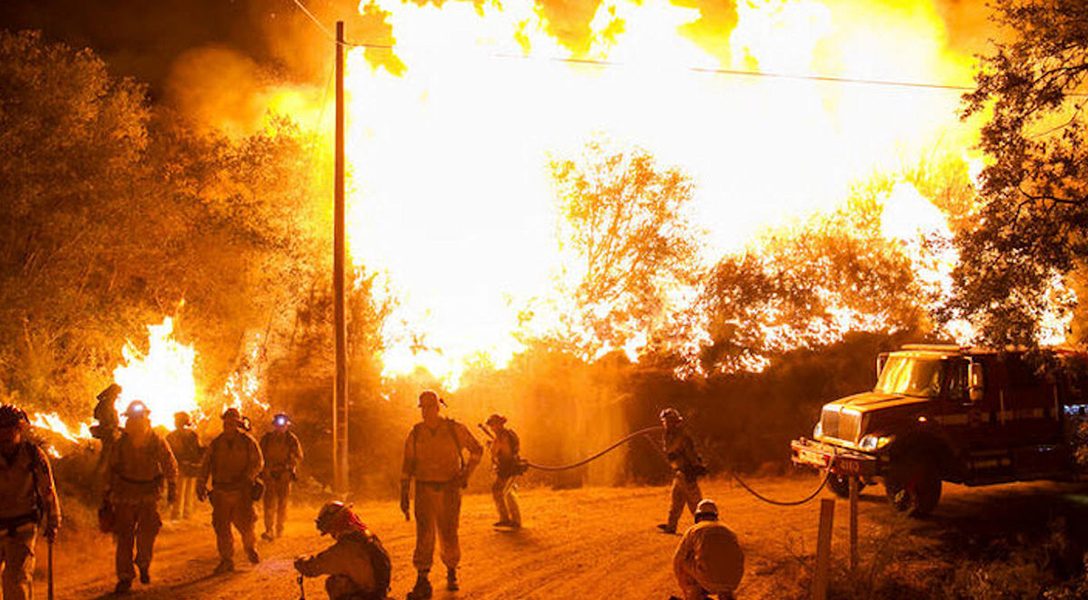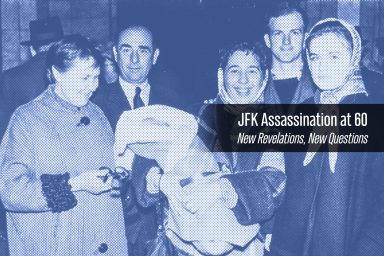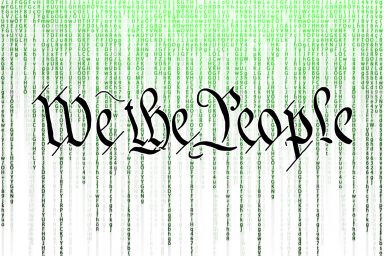30 percent of California is forested. There are over 129 million dead trees, residential buildings increasingly closer to wildland, and conflicts about who’s responsible for managing it all. What could go wrong?
California forests have long been a disaster waiting to happen. Forest density, antiquated forest practices, stressed and dead trees as a result of bug infestation, conflicts between state and federal government, and private property owners wanting to live close to the “wildland-urban interface” are just a few of the problems.
In this week’s WhoWhatWhy podcast, we talk with longtime California environmental reporter, Julie Cart, about just how bad the problem is and what is being done to prevent more death and destruction.
She explains that a full 30 percent of California is forested. Of this total, 60 percent is owned by the federal government, 2 percent by the state of California, and the rest is owned either privately or by local governments. Each has a different approach to dealing with the problem.
California has an estimated 129 million dead trees, an acknowledged factor in spreading wildfires, Cart says. The cost for removing a single dead tree is approximately $1,000, and the optics of cutting down trees, even dead ones, in a state with strong environmental rules make remediation even more difficult.
The impact of climate change on forest fires involves a deadly feedback loop. So many of the fires are a direct result of extended drought related to climate change. But in torching so many dead trees, a severe fire season of one or two months can release enormous amounts of carbon into the air — more than that emitted by all the cars in California each year — which significantly adds to the buildup of greenhouse gases fueling climate change.
Last year’s fires cost over $9 billion; this year the toll will be even higher. In both dollars and lives lost. Cart points out that while Cal Fire and the US Forest Service have vast resources, so much of those resources are diverted to firefighting, leaving little time or money to do the necessary work of prevention.
Cart suggests that perhaps the real solution is simply to tell people, as they do in Australia, that if they choose to live in certain areas, they cannot expect a fire truck to roll up the driveway during the next disaster. They will have to learn how to fend for themselves.
Click HERE to Download Mp3
Full Text Transcript:
As a service to our readers, we provide transcripts with our podcasts. We try to ensure that these transcripts do not include errors. However, due to time constraints, we are not always able to proofread them as closely as we would like. Should you spot any errors, we’d be grateful if you would notify us.
| Jeff Schechtman: | Welcome to Radio WhoWhatWhy. I’m Jeff Schechtman. |
| For those of you that are old enough, you may remember that one of the crazy ideas that came out of counterinsurgency during the Vietnam War was that we often had to destroy a village in order to save it. It was counterintuitive and maybe it was right or wrong, but it went to the heart of the broader argument that we see playing out over and over again in so many areas, where in order to do better and really focus on long-term good, we have to go beyond the immediate emotional reactions and see the bigger picture. | |
| Such is the case with California’s forests. Many are overgrown, populated with millions of dead trees, and the state has neither the resources nor the manpower to deal with this. More complicating is the relationship with California’s largest landowner, the federal government, and the interface with private property. Today, the cost in terms of life, property, and environmental damage is staggering. | |
| My guest, Julie Cart, a long-time environmental reporter in California and a writer for CALmatters, has written extensively about the horrors California now faces, seemingly on an annual basis. It is my pleasure to welcome Julie Cart here to Radio WhoWhatWhy. | |
| Julie, thanks so much for joining us. | |
| Julie Cart: | Good to be with you Jeff. Sorry about the circumstances. |
| Jeff Schechtman: | Most people, when they look at the forests, see this glorious bounty of nature, and in fact, the reality is that it’s kind of a disaster waiting to happen. Talk about this in the broad sense first. |
| Julie Cart: | Well, there’s a broad sense and then there’s the view of fire. |
| The broad sense is that fire was a natural part of any ecosystem. It came and went, natural fires, with lightning. Native Americans used to light fires to clear land and to chase out animals and things like that, but we are afraid of fire. I guess we’re cavemen at heart. For 200 years, 100 and a half years, men and women have sought to put out fires. | |
| The forests are very, very full in most places and that density, rather than being a sign of health is, from a biological standpoint, really difficult. It makes it difficult for trees to compete for nutrients, for sun, for water, and it also compounds problems of fire. | |
| Jeff Schechtman: | How did the situation get this bad? |
| Julie Cart: | Well, there’s two parts of it. The situation in terms of forest policy got to this point because the US Forest Service, which used to do most of the firefighting, certainly in the American West, started a policy in the 19th century of putting out fires as quickly as possible. That’s because of the fear that they would get out of hand and they didn’t have the capacity to contain them. And also, just because of fires, in the cases that they were talking about, were occurring so near to people. |
| So they put out fires, not allowing what would be considered a natural burn, and it led to some overgrowth. Of course, there was quite a lot of timber cutting at that time too. There was a policy of, “When we see a fire, we jump on it and we put it out.” | |
| The second part of it in California is the drought and bark beetle infestation. You have stressed trees, in especially the southern Sierra Nevada range, that are ripe for beetles to jump on them and start boring through and basically killing these trees. When you have that kind of tree density, these guys jump from tree-to-tree. It’s a bit simplistic, but they don’t have to travel very far. It, again, just sort of speeds up and makes worse a problem. | |
| So it’s two-prong: there’s a policy, there are environmental situations that have caused it as well. | |
| Jeff Schechtman: | Is in fact one of the problems and one of the fears as it relates to fire that we have also built closer and closer to these forests? |
| Julie Cart: | That’s completely the problem, Jeff. |
| The imperative to put out fires is different in densely populated places like California than, say, Alaska where there are fires that go for months at a time. They’re monitored, they’re watched, in some cases, they’re herded around by fire managers, but they have a role to play and they’re not doing any harm. There’s some air quality issues, but generally speaking, they let them go. | |
| In Southern California, there is this funny little place that fire people call the Wildland-Urban Interface, the WUI. It is where we all want to live. Everyone wants to be on the edge of something. The next, the next, and then another subdivision leapfrogs. You have Lake Tahoe where people are plunked down right in the middle of forests. It’s a beautiful place to live in Redwoods, etc. The imperative then becomes we have to save people and then property. There’s no idea, there’s no even opportunity in the minds of the fire folks, to allow them to burn at all and do some of this work of clearing the forests, because you just can’t allow it because of the danger to public safety. | |
| Jeff Schechtman: | The other interface that’s just as critical it seems is between state forest land and private property that’s forested. |
| Julie Cart: | Yeah, it makes managing a landscape extremely difficult when you have this mosaic. |
| So just kind of big numbers: 30% of California is forested. It’s not the only place where fires occur, but those are the kind of megafires that we’re talking about. You have 30% of it is forested; 60% of that forested land is owned by the federal government, and California, it comes in about 2% as far as ownership. The rest is this – please don’t do the math – but the rest is a complex, certainly private property, county, all kinds of smaller ownership. Each entity has a different approach, has different tools, and it makes it very, very complicated. | |
| Now, the state and the Forest Service, the US Forest Service, so state is managed by Cal Fire, that’s our firefighting force, and the US Forest Service have an agreement called A Good Neighbor Policy that was embedded in a federal bill that allows each to work on the other land. What makes people crazy or irritated, I guess is a better term, the common complaint in rural California, “The Forest Service isn’t managing its forest, its land properly. I have a ranch, a farm, a vineyard adjacent to it. A fire starts on their land and because of this overgrowth and because of this poor stewardship, that allows a fire to grow and come onto my property. Then I’m stuck with it.” | |
| So everybody screams and yells, and as we know, that’s part of living in California. | |
| Jeff Schechtman: | What, if anything, is being done to begin to address this? And also, why has it been so difficult to get the focus put on this? |
| Julie Cart: | Well, it’s difficult on so many levels. There are the optics of fire, which we, as I said, in our reptilian brain, fire is bad and we are afraid of it and we can’t, very often, control it. There are the difficulties in cutting trees, both again, with what it looks like when you have what otherwise people might consider a healthy forest. It’s sitting there and then you get these crews in there and their chainsaws are going and sawdust is flying and that looks bad and can be. |
| There’s also the difficulty and expense of doing that work. It’s very, very expensive to go into a forest, a hillside, steeped hillside, and start cutting trees, removing them, and then disposing of them. One of the problems homeowners in California or landowners are experiencing is this epidemic of dead trees, 129 million dead trees across the state. Removing trees is very expensive. It can be $1,000 a tree. It’s not really any less, even though there’s tremendous volume, on the US and state forests. | |
| So it’s really expensive and to do it by hand, which is called a mechanical treatment, where you pick small diameter trees because you want to keep the big ones, that then becomes expensive in and of itself and then there’s no commercial value for that wood. You are removing, at great expense, something that you can’t then turn around and sell to pay for the project. It’s complicated on so many levels. | |
| If you want to burn, which is an efficient, again, but very fraught process. They’re called controlled burns or prescribed fires. This time of year, forest managers would have already identified places where, that are in need of this, usually around communities. | |
| Jeff Schechtman: | One of the things you point out is that the dead trees in these forests aren’t doing the environment any good at all. They’ve outlived their usefulness in that regard. |
| Julie Cart: | Well, the importance of forests are just so … It’s impossible to overstate the importance of forests to California. They’re our watershed. The Sierra Nevada, that’s the focus of a recent report on these topics. The Sierra Nevada holds 60% of the state’s watershed. Trees serve what they call ecological services or ecosystems services. They hold water in, so they’re our watershed; they absorb carbon through photosynthesis, so they’re taking carbon out of the air, so they’re called carbon sinks; and then they provide all the habitat and all the other things that we know that forests do. |
| So when trees die, they release carbon because they’re carbon-based entities as we are, so they’re not only losing their capacity to help us pull carbon out of the air and reduce greenhouse gasses, they are emitting greenhouse gasses. That is very bad. Burned trees and dead trees emit something called black carbon that is on an order worse in terms of emissions. | |
| When fires occur, high-severity fires, the carbon that’s released is, in some cases, comparable to … It can be a couple months of a fire, it can equal the number of emissions from cars in California for a year. It’s quite serious. There is a climate change impact, both positive for healthy forests, and negative for ones that burn or die. | |
| Jeff Schechtman: | What has been state policy with respect to this and how bad is the shortage of resources to address this? You were talking earlier about how expensive this was. |
| Julie Cart: | Cal Fire has a budget of more than $2.5 billion dollars. The problem that California faces is because of the public safety issues of fire suppression, fighting fires, that is taking precedence over doing projects and doing things that can mitigate these fires when they occur. There’s no fireproof forest, or even any place in California; fires will occur. What you want to do is reduce their size and severity. That’s very, very expensive, but the more expensive thing is to spend money on the backend putting out the fires than it is to do the work on the frontend. |
| So to answer your question, what the agencies say is, “We never catch our breath. We don’t ever have a down moment where we can take the crews that are the firefighters and make them the forest clearers and do that kind of work,” because they feel like they never have a moment to get ahead. It is hugely expensive. The state augments Cal Fire’s budget fairly generously, understanding that this is a pretty serious problem, with money from the Greenhouse Gas Reduction Fund, more than $200 million from that, which is the money that is gained from the Cap-and-Trade Program that California has, selling of carbon credits. That money goes to Cal Fire, which then gives it to local communities, counties, small groups to do the forest clearing that the agency can’t necessarily do. | |
| It’s almost an intractable problem because it is so complex and so ongoing that they just really don’t ever feel like they can get ahead of it and start doing the backlog, what you might consider the backlog of the work. | |
| Jeff Schechtman: | It’s also a vicious cycle in that the slower the progress is in clearing these forests, the more fires that we’re clearly going to have, the more resources that go into fighting the fires, and the less resources and time for clearing. |
| Julie Cart: | That’s completely it and I’m quite delighted that I’m not in charge of all of this to try to sort it out. |
| A lot of the problem or some impediments that are often cited that are in the way of doing this work, one of the big ones is public perception. I interviewed a couple Forest Service guys in the Plumas National Forest up in the Northern Sierra. They said, “It takes years and years,” and it’s no exaggeration, “to plan a burn,” with very understandable and reasonable environmental restrictions because you have to make sure you’re not in a place that’s particularly sensitive for endangered species or there’s a public safety issue. Because these burns that are a part of the forest clearing are also carbon emitters, there’s an air quality issue. They need permission. They have to understand meteorological trends and things like that. | |
| Anyway, there’s a lot that makes it difficult to plan one of these and they can take three years from the time that you identify, say, 100 acres where you want to burn to the day that you can start it. | |
| Anyway, these guys say that the public part of it is, in the middle of a prescribed burn above the town of Quincy, that they felt was quite imperiled by this hillside of overgrown forest, they started to burn and then suddenly, the wind changed and they were an hour into it that took a couple of years to plan and all these people around. Phones started ringing. People said, “There’s smoke coming into town. We’re under fire siege,” understandably. It got shut down. | |
| So we need, according to fire authorities, we need to better accept and understand exactly what this work is. When we see crews out there cutting, it’s not the evil timber industry clear cutting California to make a profit; it is public land that we all own that is being managed to keep everybody safe and to keep the forests healthy. That’s another issue. The healthy forest will help us all is, I think, the bottom line for them. | |
| Jeff Schechtman: | And with respect to the private property, and the forests on private property, what, if any, incentives is the state providing to get landowners to do clearing on their land? |
| Julie Cart: | It’s really an owner’s burden financially for private property owners to manage their property for fire, to protect not just themselves, but should a fire occur, to keep it off other peoples’ land because nobody wants that to happen. |
| The state has a pretty robust grant program to help with that. I don’t think in any regard it ever pays fully for that, but there are local groups, there’s Cal Fire. Counties where this is an issue are in that program and they can get their hands on that money or request it, at any rate. Everyone has to do their part because we’re connected. I realize it’s simplistic, but the fire doesn’t stop at a border and say, “Well, we better not go here. This is the guy’s private ranch and we’ve been burning on state property or Forest Service property or Park Service property.” | |
| One person’s neglect does impact another landowner’s property, so there’s a requirement that everybody be fire-safe. That goes beyond the kind of norm that a lot of people are aware of, which is keep your firewood away from your house, and the clearing around your house. This is a much larger scale kind of fireproofing. It’s quite expensive. | |
| Jeff Schechtman: | And to what extent have environmental rules and regulations, and you mentioned permits and the like before, to what extent has that hindered sometimes private property owners from doing what they need to do on their side? |
| Julie Cart: | Yeah. California’s environmental laws are usually pretty easy to scapegoat for slowing down lots of projects. They’re there for a reason, but I think the air quality issues around fire are very real. There are huge health problems. It’s a very, very serious problem and not to be taken lightly. |
| When you’re doing a prescribed burn, these fires that are for clearing, it makes perfect sense that you would have to consider what the emissions are from those fires, and not just in the terms of carbon and greenhouse gasses, but just public health. But the argument is that they are, or the science would say, that both the emissions and the carbon from those fires that are set purposefully, they’re low intensity, are much smaller than high-intensity, severe fires. | |
| But private property owners, I mean, in some cases, you can get permits. Florida has a really interesting model for this of training private property owners how to do these fires, how to do manage controlled burns on their own property. They’re trained, and then they’re certified, and then they’re indemnified by the state. | |
| So, I have five acres and I’m doing a controlled burn that I have a permit for that everybody is aware is happening, kind of keeping their eye on it, and if something happens – not through negligence because you just can’t control everything – and it destroys property or gets onto someone else’s land, the state helps them out. You don’t have an incredible burden because it’s understood this is enlightened self-interest. “If you do that, it’s cheaper for us, so we’re going to pick up a little bit of the load.” They have a big education program so people understand when they see burning that it’s not necessarily an emergency; it’s actually for good, or can be. | |
| So private property owners have a recognized right in Florida to manage their land and the state has helped them along managing it in a more scientific, fire-safe way. And California, some people here think California needs to look at that and there’s some legislation coming out that might address that, that you can’t hamstring private property owners who have a big role to play by what some people might consider onerous environmental blocks, but they’re there for a reason. | |
| You can’t broadly say that environmental laws in California are stopping these projects; they just simply aren’t. I think we would not want pretty random and wanton cutting and burning. You do have to consider the holistic system that you’re dealing with. | |
| Jeff Schechtman: | Right, you had mentioned the optics before and it’s an issue that private property owners have to deal with as well, with respect not just to controlled burns, but cutting and clearing as well. |
| Julie Cart: | Oh yeah. We’re all busybodies. We go up to Yosemite and we see cutting and say, “How dare they desecrate this beautiful National Park?” Maybe those trees are coming down because they’re dead or dying and they’re a public health and safety issue. We all peak over the hedge and say, “Boy, that guy has got a really messed up backyard. He needs to clean that out,” or, “She’s got too many trees and there’s going to be pests and all kinds of things.” |
| I think what California officials are trying to do, and their success is to be judged by others, but I think what they look at in terms of fire and private property is the responsibility to not only keep your land fire-safe and publicly safe, but also to not allow it to … your problems or your neglect become someone else’s problem. You have to balance that with your own right to do whatever you want with your property. We do have private property rights in the state and in the country, so it’s a tough one. People don’t like to be told what to do. | |
| The needle they’re trying to thread is to show or coax folks into saying, “Look, if you do this, this is good for you. We like it too. We’re not mandating it, but we’re kind of showing you how this is actually a plus for you, and we’re going to help you a little bit through education and a little granting.” | |
| Jeff Schechtman: | Because when these fires happen there is a federal role, particularly with respect to FEMA, if there’s significant damage, do the feds have any role or any influence or any say in these management practices? |
| Julie Cart: | Oh, the feds have probably the loudest voice in the room. 60% of the forests in California owned are under the jurisdiction of the US Forest Service, and almost half the property period, half the land in California is owned by the federal government, various agencies, so they have a big say. They try not to speak too loudly because they’re the federal government and sometimes people get a little resentful. |
| For example, there’s a statewide taskforce that’s dealing with the problem or looking at the problem of forest health in terms of the trees and the dying trees. There are 80 different entities: state, local, federal. There’s no table large enough around which they could have a conference. So the federal government has a huge role to play. | |
| Interestingly, in California, usually the federal government is the big deep pockets people that sit around and say, “Well, okay. I guess I have to pull out the checkbook.” California has quite a lot of dough to put on this and we spend it because it’s a serious problem. It’s an issue for us. When you write the checks, you have a bit more say. It sounds a bit crass, but if you say, “We’re going to take this on. We will take on this responsibility, even though it’s a US forest,” then it gives you a lot more leverage, it gives you a louder voice. | |
| Jeff Schechtman: | You mentioned that the attitude last year after the fires was never let a crisis go to waste. When we look at what’s taking place right now, have we learned anything? Did we benefit from the experience of last year’s fires? |
| Julie Cart: | Well, as my mother might say, “We’re a bunch of hard heads.” The lessons are there, the learning and implementation from the lessons is another issue. |
| Of course the legislature spent a lot of time. In fact, some people say it occupied so much of the air in the room that a lot of other important legislative priorities didn’t get attended to, but when you really came out of it, it was allocating money for mitigation efforts, so forest cleaning and making grants available for communities to be fire-safe, which also has to do with clearing brush, and some education. They did some work, which is now very much in the news, regarding the role of utilities and their liability for fires, which of course, is very much on the minds of Pacific Gas & Electric at the moment. | |
| As we do in California, we tend to study things to death. We know a lot about the science of fire, we know a lot about fire behavior, where fires occur, how they occur, but to actually do something about it is, I would say we’re not at the forefront. | |
| Jeff Schechtman: | With respect to the mitigation efforts, one of the things you talk about is that it’s very difficult to get the resources, not just because of money or manpower, but because that money and manpower is going consistently to fighting the fires and there really isn’t time to do the mitigation. Is that an ongoing problem? |
| Julie Cart: | Well, the big problem is the fire calendar. There used to be a time in California and really, the American West, when there was an identifiable fire season. And in fact, many of the firefighters are called seasonals because they’re hired for only a portion of the year. You could say, “From this month to this month, we will be fighting fires, doing fire suppression,” as they like to say, “and then in the winter, phew, we can get down to being foresters” because Cal Fire actually is our forestry department, so there’s other stuff they’re supposed to do. But they had time in the winter, four or five months, where they could do this forest clearing, cutting dead trees down that are quite dangerous, and doing all the other work to make the state more fire-safe. |
| That doesn’t happen anymore because that calendar’s out the window. Here we are, in November, there’s going to be fires – I’m in Los Angeles – there’s going to be fires in Southern California in December and January, and you all had your fires in January last year, at the New Year. There’s no time anymore. | |
| The resources are stretched thin and the other thing that used to happen is California used to send firefighters to help Washington, Oregon, and the other western states because their fire season started earlier. Then theirs ended and they would send folks to help us; they’re also in this new calendar. It’s a cycle that doesn’t end. It’s one of those things where you can throw money at it, and it does help somewhat, but it is a resource problem, it’s a policy problem, it’s a where people are living problem. It’s so complicated and it really speaks to how California is organized at the moment. | |
| Jeff Schechtman: | Is it a problem with any kind of solution? Even if the legislature wanted to be more aggressive, even if it went beyond just studying these things, it seems that the resources simply aren’t available to do all that needs to be done. |
| Julie Cart: | Well, I think the way to attack it, because there are many, many aspects to it, is to think less about, “We need more firefighters,” and think more about, “How can we either prevent, forestall these fires, or see that they’re smaller, or mainly, not have to fight them because we don’t have to defend homes and people?” And in reverse order. They’re more interested in saving people than homes. |
| What I mean by that is someone is going to have to make a very difficult decision – and I don’t see any public officials doing it, and they don’t do it anywhere that I know of in the West – which says, “I’m sorry, you may not live there. You are in a dangerous place. You cannot expect your neighbors, other Californians, taxpayers, these agencies, to come in and help you.” Just like some people aren’t allowed to build in a floodplain or when you are living on a major earthquake fault, you understand certain things, your ability to insure your house is limited, etc. | |
| One way to deal with it is to have fewer fires that have to be put out. You have to put out a fire in a subdivision, but in Alaska, there’s fires that burn for months at a time. They monitor them, but there’s no attempt to put them out because they’re actually doing work for you by removing vegetation, but they’re not threatening anything. The way we build in California, where we build, our population, all of that is impacting the necessity to put out these fires and to respond to them. That’s the problem. | |
| How do you resolve that? Some adults have to stand up and say, “We can’t build in these places anymore.” And that, I don’t see any elected official telling any homeowner or private property owner that they can’t do that. | |
| But the next thing that happens, and it happens in places like Australia, they say, “If you build there – we’re not saying you can’t – we’re just letting you know, you’re grown-ups, you’re going to build there. These are the things that could happen. We will not be coming down your driveway with the firetruck.” And then, it sounds horrible and cruel, but then they’re educated, there’s training programs, homeowners are certified and get training, and they stay and defend their homes with mixed results, but we can’t save everyone, which is the horrible triage of firefighting. That’s the problem. There will always never be enough resources because there are so many people, dense populations of people, who are in places that are highly flammable. | |
| Jeff Schechtman: | Given that elected officials won’t say that, have the insurance companies been willing to step up and perhaps say that to potential clients? |
| Julie Cart: | You know, if you wanted to do a threat map in California, it would be red. We have sea level rise on the coast, you have earthquakes across most of the state that are difficult and costly to insure, you have fire maps, and you have the western part of the Mojave Desert where it’s becoming so impossible to live, it’s unsustainable. So yeah, I think the market always tell us more and more quickly and more acutely what the problems are. They’re going to walk away and they may end up doing what’s happened with earthquakes. The state will set up some kind of its own fund. |
| But again, that’s taxpayers. I’m not a Libertarian, but I can see that people would complain about this. You know, liability. | |
| Jeff Schechtman: | We’ve all heard the comments that have come from the White House over the course of the past few weeks. Has that had any impact at all as you’ve seen it, in terms of the Department of Forestry, the federal government, the Department of Interior, in dealing with any of this? Has it made any real difference on the ground? |
| Julie Cart: | No. If you’re talking about President Trump’s tweet, that these fires are a function of mismanagement of the forests, for the most part, they’re not occurring in forests to start with. Certainly not in Southern California, and only minimally for the Camp Fire. |
| So the professionals who work in the US Forest Service and all the other services, federal agencies that have firefighting arms, they know what the issues are. It’s kind a typical tweet from him and it’s especially delicious, I’m sure, for President Trump because he likes to take on California. But that kind of comment will have zero impact. | |
| This week, the Secretary of Interior was touring burn sites in the state and he will understand that this requires a federal response equally. The implication from the President was that the mismanagement of the forests in California is the responsibility of state officials; they have a role to play, but basically, these are federal forests. These are US forests that are managed by the US government, so if you want to put blame somewhere, you can put it at the feet of the federal government. | |
| Blame is not a useful thing to do at the moment, but the forested area in California, is for the most part run by the federal government. | |
| Jeff Schechtman: | Is there anything new that we can learn from these fires, either in Northern or Southern California, that’s any different than what we learned a year ago? |
| Julie Cart: | I don’t think there was anything that was particularly unique. In Southern California, they were wind-driven fires that we anticipate when the Santa Ana winds are blowing. In Northern California, you can’t … These were human-caused fires. The cause has not been determined, but unless there was a thunderstorm nobody knew about, these are human-caused fires. Whether it was a utility or a car spark, you give a dirty look to a tree, it’s going to catch fire with aridity that we have here and the drought that we have. |
| So there’s nothing more to learn. It’s what you do with what you already know. There’s going to be discussions about how do you evacuate? What do we do about getting people out of their homes because, even in mandatory evacuations, 10% of the people stay. We have to have, I think, more education. Public officials don’t like to do it because it’s scary. They have PSAs that have animated figures or people saying, “Hey, if there’s a fire …” No, this is serious business. In my opinion, I think we don’t do enough to educate homeowners or anybody else about the science of fire, how fires move, what you can expect to happen, and the enormity of it. | |
| Again, I’m referring to Australia because I wrote about it and spent some time examining what they do. They lay it out for people and it’s based on science. You cannot outrun a fire, you cannot expect to get in your car, floor it, and then outrun a fire because what happens is you drive down a road that you’ve lived on for 40 years. In that smoke and in the panic, people crash, they drive off the road, their tires start melting, which is true, and they get out and they try to run and they find, unfortunately, families ten feet from their car. | |
| Probably what might come out of this is a discussion about when and how people should evacuate, the implications of staying at home to defend your house, and if you do that, how might you do that safely? | |
| Jeff Schechtman: | Julie Cart. Her article on forest management appears online at CALmatters. Julie, I thank you so much for spending time with us here on Radio WhoWhatWhy. |
| Julie Cart: | My pleasure, Jeff. |
| Jeff Schechtman: | Thank you. And thank you for listening and for joining us here on Radio WhoWhatWhy. I hope you join us next week for another Radio WhoWhatWhy podcast. I’m Jeff Schechtman. |
| If you liked this podcast, please feel free to share and help others find it by rating and reviewing it on iTunes. You can also support this podcast and all the work we do by going to WhoWhatWhy.org/donate. |
Related front page panorama photo credit: Adapted by WhoWhatWhy from smoke (Forest Service / YouTube).






